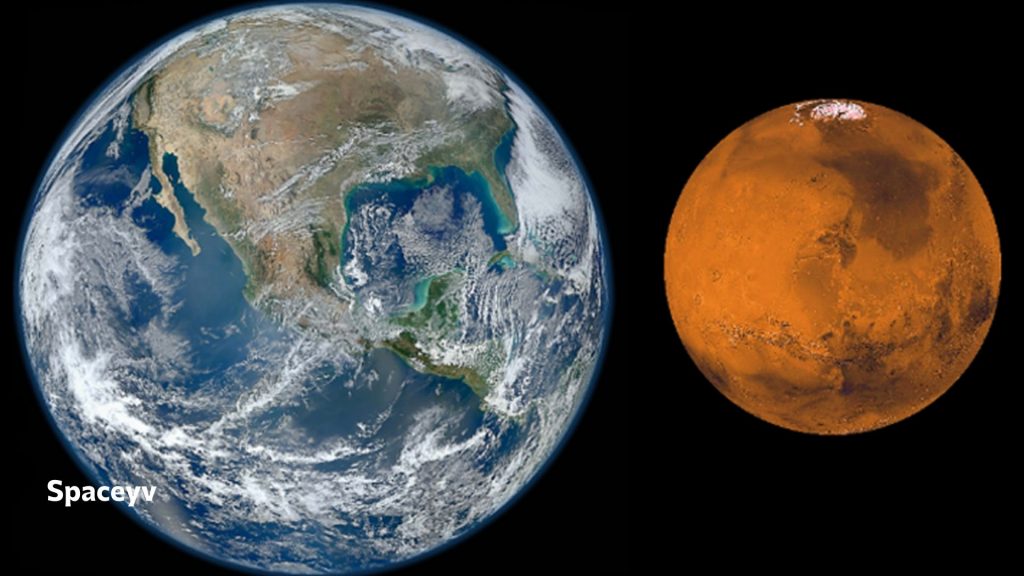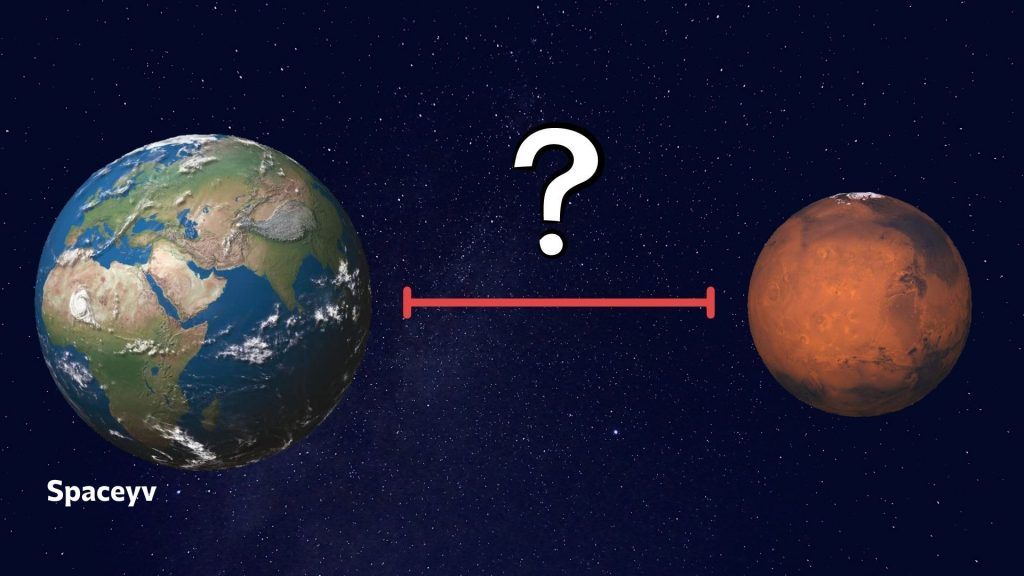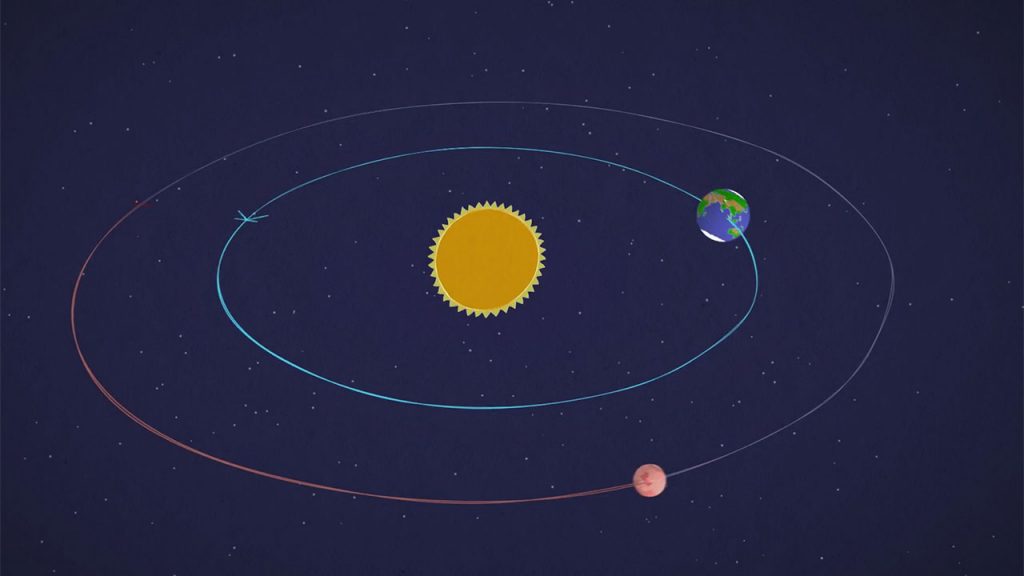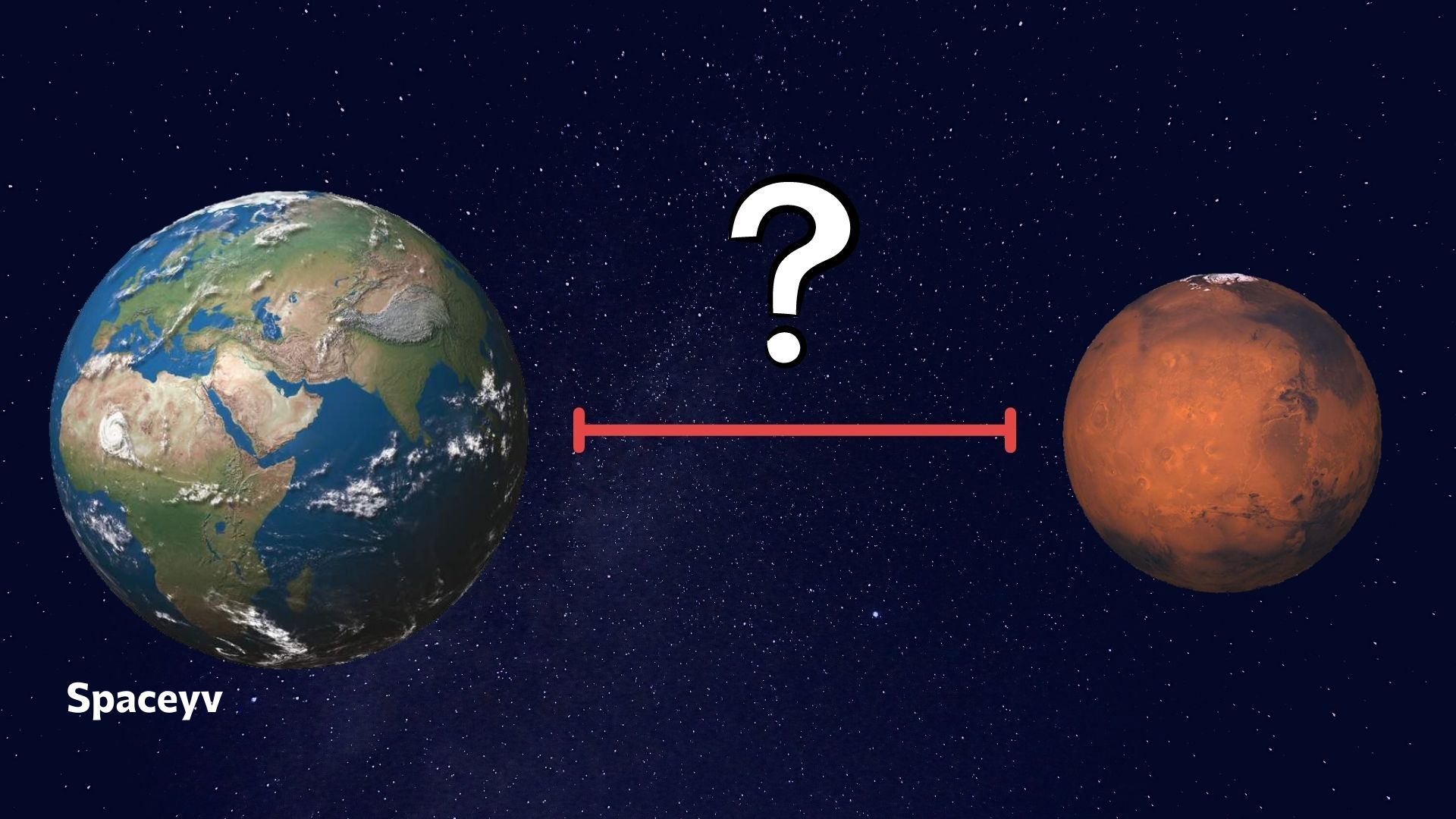how close is mars to the earth ? Mars, often referred to as the “Red Planet,” has long captivated the imagination of scientists, astronomers, and space enthusiasts alike.
One of the key factors that make Mars such an enticing destination for exploration is its proximity to Earth. In this article, we delve into the dynamics of the Earth-Mars relationship, exploring just how close these two planets can get to each other. stay with Spaceyv.
Mars is the fourth planet from the Sun. The surface of Mars is orange-red because it is covered in iron(III) oxide dust, giving it the nickname “the Red Planet”.
Understanding the Orbital Mechanics
Both Earth and Mars orbit the Sun, but their orbits are not perfectly circular. Instead, they are elliptical, meaning their distance from the Sun varies throughout the year. This variation in distance also affects how close Mars comes to Earth during its orbit.
-
Elliptical Orbits:
- Planets orbit the Sun in elliptical paths rather than perfect circles. An ellipse has two foci, with the Sun located at one of them. This means that planets don’t follow a consistent distance from the Sun throughout their orbit.
-
Aphelion and Perihelion:
- The point in a planet’s orbit farthest from the Sun is called aphelion, while the point closest to the Sun is called perihelion. These points vary depending on the planet’s elliptical orbit.
-
Orbital Period:
- Each planet takes a different amount of time to complete one orbit around the Sun. This duration is known as the planet’s orbital period. For example, Earth takes about 365.25 days to complete one orbit, while Mars takes roughly 687 Earth days.
-
Kepler’s Laws:
- Johannes Kepler formulated three laws of planetary motion, which describe how planets move in their orbits around the Sun. These laws include:
- Kepler’s First Law (Law of Ellipses): Planets orbit the Sun in ellipses with the Sun at one focus.
- Kepler’s Second Law (Law of Equal Areas): A line segment joining a planet and the Sun sweeps out equal areas during equal intervals of time.
- Kepler’s Third Law (Law of Harmonies): The square of the orbital period of a planet is directly proportional to the cube of the semi-major axis of its orbit.
- Johannes Kepler formulated three laws of planetary motion, which describe how planets move in their orbits around the Sun. These laws include:
-
Opposition and Conjunction:
- Opposition occurs when a planet is positioned directly opposite the Sun in the sky as observed from Earth. Conjunction, on the other hand, is when a planet is aligned with the Sun from Earth’s perspective. These events have significance for observation and space mission planning.

how close is mars to the earth Exactly?
The closest approach between Earth and Mars, known as opposition, occurs approximately every 26 months. During opposition, Mars and the Sun are on directly opposite sides of Earth. This alignment brings Mars closer to Earth, making it appear brighter and more prominent in the night sky.
The distance between Earth and Mars during opposition varies due to the eccentricity of their orbits. On average, Mars is about 225 million kilometers (140 million miles) away from Earth during opposition. However, this distance can vary significantly depending on the specific alignment of the two planets.
Perihelic Opposition
Every 15 to 17 years, Mars experiences what is known as a perihelic opposition, where it reaches its closest point to the Sun (perihelion) at the same time as opposition. During a perihelic opposition, Mars can come exceptionally close to Earth, significantly reducing the distance between the two planets.
The closest recorded approach between Earth and Mars in recent history occurred during the perihelic opposition of 2003 when the planets were only about 56 million kilometers (35 million miles) apart. This was the closest approach in nearly 60,000 years, sparking widespread interest and excitement among astronomers and the public alike.
Effects of Close Approaches
Close approaches between Earth and Mars provide unique opportunities for scientific study and space exploration. Space agencies take advantage of these favorable alignments to launch missions to Mars, as the shorter travel time and reduced fuel requirements make interplanetary travel more feasible.
During close approaches, astronomers can also observe Mars in greater detail, studying its surface features, atmosphere, and weather patterns with telescopes and spacecraft. These observations contribute to our understanding of the planet’s geology, climate, and potential for past or present life.

Average distances between Earth and the other planets in our solar system
- Mars:
- Closest Approach: Approximately 225 million kilometers (140 million miles) during opposition.
- Closest Recorded Approach: About 56 million kilometers (35 million miles) during the perihelic opposition of 2003.
- Mercury:
- Closest Approach: Varies between approximately 77 million kilometers (48 million miles) and 221 million kilometers (137 million miles), depending on its position in its orbit relative to Earth.
- Venus:
- Closest Approach: Approximately 38 million kilometers (24 million miles) during inferior conjunction when Venus is between the Earth and the Sun.
- Jupiter:
- Closest Approach: Varies between approximately 588 million kilometers (365 million miles) and 968 million kilometers (601 million miles) due to the eccentricity of its orbit.
- Saturn:
- Closest Approach: Varies between approximately 1.2 billion kilometers (746 million miles) and 1.6 billion kilometers (994 million miles) due to the eccentricity of its orbit.
- Uranus:
- Closest Approach: Varies between approximately 2.57 billion kilometers (1.59 billion miles) and 2.9 billion kilometers (1.8 billion miles), depending on its position in its orbit relative to Earth.
- Neptune:
- Closest Approach: Varies between approximately 4.3 billion kilometers (2.7 billion miles) and 4.7 billion kilometers (2.9 billion miles) due to the eccentricity of its orbit.
These distances can vary slightly due to the elliptical orbits of the planets and the changing positions of Earth and the other planets in their respective orbits around the Sun.
Related Contents:

Conclusion
Mars may be millions of kilometers away from Earth, but during certain alignments in their orbits, the Red Planet comes tantalizingly close. These close approaches offer valuable opportunities for exploration and scientific study, driving missions to unlock the mysteries of Mars and deepen our understanding of the solar system’s dynamics.
As we continue to explore and observe our neighboring planet, the close relationship between Earth and Mars remains a source of fascination and inspiration for generations to come. thanks for staying with Spaceyv.



